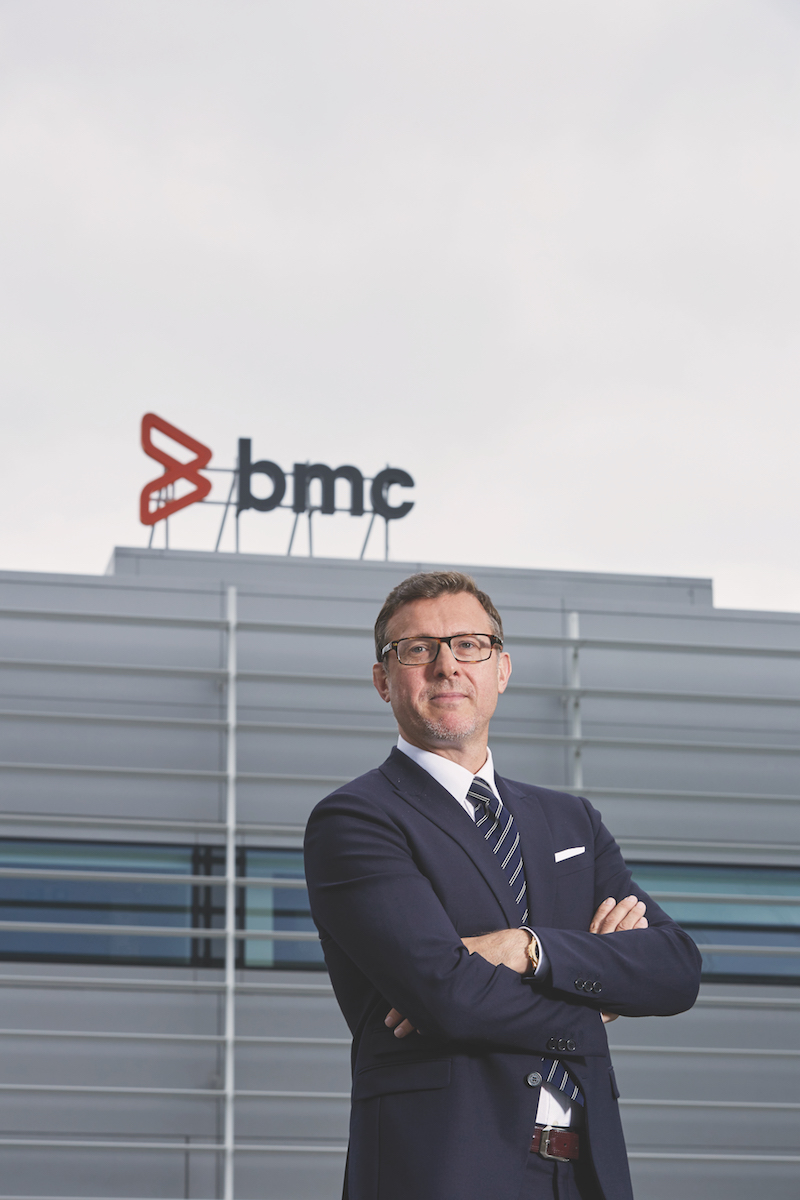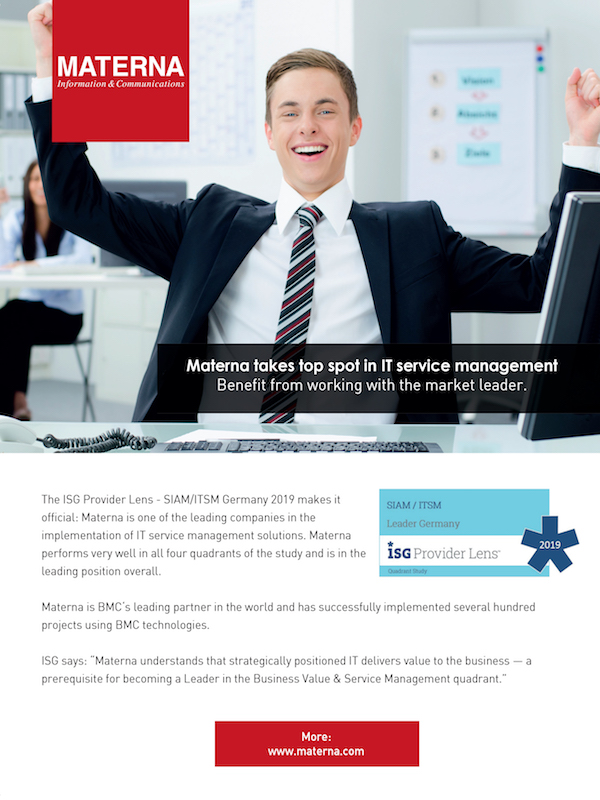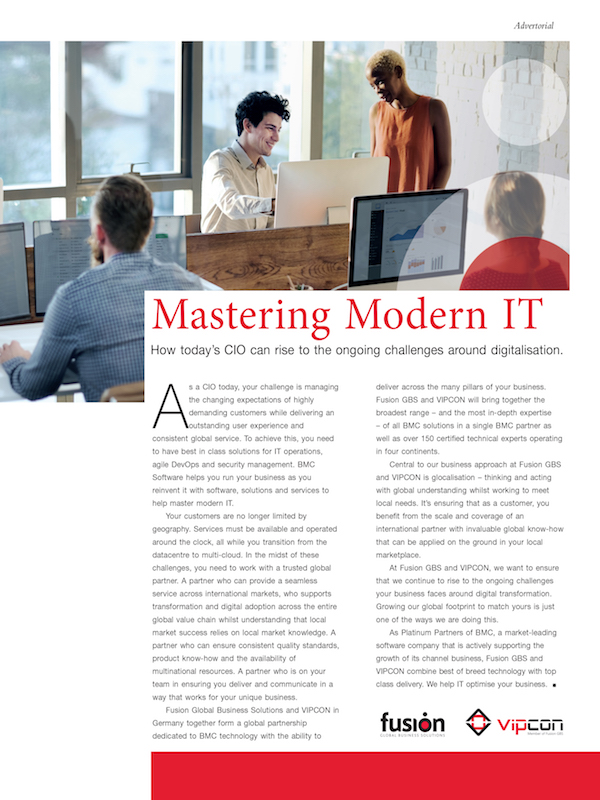There are a couple of ways the global economy could shut down and life as we know it cease: a dystopian scenario à la disaster movie 2012 or the removal from existence of IT management company BMC Software. We are perhaps being a little dramatic with the latter, but the firm does provide the IT support that keeps 92% of the companies on the Forbes Global 100 list running. In addition, it also counts more than 10,000 companies as clients on its Rolodex.

Paul Cant, Vice President of the firm’s EMEA division, believes that a large part of the company’s success has to do with its clear business strategy, which is to help companies run and automate their digital services operations while providing a platform that enables customers to reinvent their digital services, taking advantage of the advancement of cloud providers, AI and cognitive IT capabilities.
“In EMEA, our priorities are clear: investment in the success of our customers, employees and partners; elevating our brand; and building a culture of sales excellence and innovation,” explains Paul. He has built and is driving key programs to manage these priorities.
One such program is STAR. Today, the program is used in global operations, but it was first developed by Paul and the EMEA team after he had identified 12 global customers who represented large opportunities for transformation and offered BMC great potential for future growth. “STAR stands for strategic, transformational, aspirational and relevant,” he explains. “Strategic, because we aim to be strategic to these customers by providing real, tangible value.
Transformational covers helping our customers through digital transformation. Aspirational is about aligning the best and brightest of BMC thought leaders to those customers. Relevant refers to always being relevant to the industries our customers are in.”
“The customer’s success has to be at the centre of why we exist.”
In a nutshell, the STAR program is about treating customers right. “The software industry has changed a lot over the years. It’s no longer just about the products or selling; it’s about delivering value to the customer.” Paul states. “The customer’s success has to be at the centre of why we exist. Measuring customer satisfaction and improving it over time is critical.”

A great customer strategy means nothing if it isn’t backed by a strong sales strategy that brings in the customers. The company’s approach to sales walks the fine line between proactive and aggressive, a result of previous unfortunate experiences. “We’ve been guilty in the past of being quite defensive,” Paul reminisces. “We were the big guy in the playground attacked by newer entrants into the cloud services sphere.”
Not anymore. “Our sales plays today are very much focused on attacking the competition,” he says boldly. “We are focusing on the top companies in every industry, making sure that we are aligned with their digital transformation initiatives, and then driving these opportunities through a world-class value-centric sales engagement model to generate a qualified pipeline.
Measuring pipeline generation and productivity is critical to the growth of any software organisation. We have also seen a significant amount of pipeline being driven from customers who have joined a competitor coming back to us because of the different capabilities we offer.”
One of BMC’s biggest revenue pipelines is the migration from Remedy, its service management solution, to Helix, its next-generation solution that’s bolstered by AI and machine learning. According to BMC, Helix takes the best practices principles from Remedy and improves them with a more people-centric, multi-cloud environment.
“Helix is going to be a critical part of our business for the next three to five years,” Paul reveals. “In the first six months of helping our customers convert from Remedy to Helix, we have already generated a strong pipeline of opportunity with more than 100 customers, and that number is growing quickly.”
“Compared with a few years ago, when we were licking our wounds from being attacked by newer players, we are now in a much more advantageous position. Helix seems to be a product that resonates very well with our customers.”
One of the biggest challenges Paul foresees for BMC is its transformation from a company focused on – and very much known for – providing on-premise digital service management (DSM) into a company that provides the same best-in-class solutions within multi-cloud environments delivered through cloud providers of its customers’ choice.
“DSM has been part of our DNA for the past 35 years, and a core tenet of that has been to help our customers run their IT processes better, whether in service management, operations or automation.
We have built 539 patents for 10,000 customers within these areas of IT,” Paul explains. “And now, we have spent significant dollars in launching these capabilities into the multi-cloud world. Getting this message out – that we are now able to help companies address their multi-cloud challenges – is a priority.”
The company’s ecosystem, or its network of suppliers and partners, is another area of focus. The firm has more than 500 partners in three categories – technology partners, alliance partners, and system integrators. Paul considers the company’s relationship with all of them, big or small, to be vital. But unlike at BMC’s South European division, which he was leading prior to his current appointment, it hasn’t always been this way for the firm’s EMEA division.
“In South Europe and the Middle East, 65 to 70% of the revenue was in some way attached to the ecosystem,” he reveals. “But when I looked at the same numbers for EMEA at the time, they were nowhere near that.” Paul has been quick to make changes and set up a strategy for the ecosystem. “Many of them build businesses around the BMC solutions,” Paul points out.
Doing so requires close cooperation from BMC, often requiring the firm to partner at a technology level. “With Amazon Web Services (AWS), for example, they worked very closely with us in our labs to optimise our products for their workloads.”
Then, there are the 40 or so systems integrators and service providers, many of whom are outsourcers, such as Capgemini and Computer Centre. These companies mainly work with supporting larger businesses using back-end solutions by BMC. “It has traditionally been a sell-to type of relationship. If they are successful in winning over customers, they will, in turn, buy more from us,” explains Paul.
“They form a significant part of our business so we have formed a special team of salespeople to focus on them and transform the selling motion to more a sell-with and co-sell for joint success.”
For the firm’s biggest partners, which include giants such as Microsoft and AWS, adequate resource allocation is a priority. “We have around 200 partners within the EMEA region and out of these, 20 to 30 are really driving most of the incremental revenue for us,” he shares.
“Supporting them, helping them scale, investing in them, developing them and educating them, that’s where the next big opportunities are.” Such comprehensive service coverage is what Paul calls value measures, as opposed to selling measures.
Behind this vision of exceptional customer support is BMC’s 6,000 employees. “We want to achieve customer engagement excellence,” Paul says. “To do that, we need a clear definition of what excellence looks like. We’ve put a lot of work into defining a sales engagement model and into measuring our sales teams against this model.”
The model puts together targets that have proven effective at keeping customers engaged. It specifies, for example, the number of new business meetings, IT solution demonstrations and value reviews that a salesperson should do within a quarter.
Paul is aware that BMC’s success is very much dependent on salespeople retention, which is why he is dedicated to ensuring that his employees can thrive within the company’s framework and has recently launched an initiative, Destination Company, dedicated to finding and growing the future leaders of BMC.

“We build and develop very capable people, so it’s not uncommon for other companies to try to poach them,” he says. “That’s why it’s important to build careers and loyalty, and make sure our people are happy here for the long-term. High turnover really damages a company’s operational ability.
“We develop very capable people.”
“90% of the people within our EMEA sales management team have started in lower level positions within BMC and moved up, myself included,” Paul continues. “Strong career progression is how we differentiate ourselves from our competitors. We want our employees to believe that they can develop their careers here.”
The efforts of Paul and his counterparts in the management team have not gone unnoticed. In October last year, BMC announced the completion of its acquisition by KKR & Co, a private equity firm. This came just five years after it went private in a US$6.9 billion (€6.18 billion) deal involving a few investment firms, including Bain Capital, Golden Gate Capital and GIC.
“We went from a consortium of venture capitalists to just one owner, KKR, who spent a significant amount of money on us,” Paul marvels. “Our solutions are very relevant and capable, the market is right and the time is right for BMC to continue its successful history into the next decade.
Head in the clouds
As part of its US$300 million (€268 million) push into cloud services, BMC has set up the Multi-Cloud Strategic Advisory Service to guide clients through cloud migration. It aims to keep the process smooth while helping clients avoid unexpected costs and security vulnerabilities. Under the service, four steps have been identified as crucial to cloud migration success.
-
Migration planning
This involves assessing the company’s readiness for cloud solutions, which may depend on whether staff members have the requisite knowledge, if processes are in place and whether the company has the technology to support the migration.
The business divisions that may benefit from being on cloud platforms are also identified. A road map is then drawn up to show the specific steps that need to be taken to complete the migration. Finally, advice for cloud-related procurement, capacity optimisation, vendor management and operating models is provided. -
Management of assets
Companies are encouraged to take an inventory of their assets and look at the connections between them to understand how they affect one another. This is to ensure that no connections are affected during the migration and everything functions smoothly after the process.
-
Cost forecasting
Simulated migrations are done with various cloud platforms in order to provide a realistic cost prediction. This also allows the client to discover the features that are not useful for them so that they can redirect resources to those that are.
-
Closing security and compliance gaps
Last, but not least, is the identification of security risks and compliance gaps. Automated remediation is set up so that the system can deal with these risks when they occur. A dashboard provides easy visibility of security and compliance statuses for quick action.
Proudly supported by:





